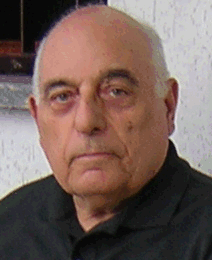



Analysis of objectives:
Development under an academic discipline of design in the aerospace field
This activity focuses on the development, in an academic context, of the culture and knowledge necessary to the designer in the aerospace field, and is characterised by scientific rigour and by the establishment of wide foundations, thus allowing to anticipate and prepare the ground for the future evolution of the field.
Design means satisfying specific operational requirements while also conforming to the levels of security accepted by the social community. Means and techniques to enact operational requirements constitute the most concrete aspects of the involved disciplines. On the other hand, instruments and logics targeted to demonstrate compliance to security levels constitute the most abstract aspects of design thinking. This concern is at the heart of engineering, which can be distinguished from applied physics and mathematics insofar it addresses the completeness and sufficiency of the experimental and calculation-based verifications leading to the demonstration that a certain security level ahs been achieved.
Security levels have a fundamentally probabilistic nature, similarly to reliability and maintainability. Such a probabilistic nature brings forwards the need to widen the knowledge necessary for the establishment of a sound design culture in the academic environment. A fundamental asset for addressing in a critical perspective the challenges of aerospace design is moving from a very large platform of knowledge, along with the ability to further widen it according to the new needs which emerge from scientific evolution and advances.
A rational (as it is required in an academic context) approach to the problems of design and to the related security issues, necessitates, perhaps in contrast to what is commonly believed, particularly deep physical and mathematical knowledge, so that the engineer is able to assess the possibilities offered by various analysis and calculus methods in order to establish security levels, as well as the adequacy of the overall analysis, prototyping and testing apparatus set up to this purpose.
Direct experience, at the same time, of the academic and industrial environments, as well as of the less know but equally important normative and testing environment, has led to the idea of elaborating at an academic level an articulated body of knowledge as a cultural background to design, both in the aeronautical and in the space fields. This turns out to be a unique effort at an international level, especially when taking into account the sophisticated design topics included, such as, for example, gross-tonnage civil aircrafts and manned spatial vehicles. One of the difficulties in this endeavour was represented by the level of activity of Italian industries with international liaisons and collaborations. Still, such liaisons can be fruitful where appropriately dealt with. On the other hand, the results achieved by the Italian normative authorities can be considered as satisfying, due to the existence of international regulations de facto driven by the most advanced country in this domain, i.e., the USA.
Broadly speaking, the idea of establishing an academic discipline of design thinking goes back to Giuseppe Gabrielli. Also, the idea and the related instruments for deepening in a critical light the features and potential of various analysis methods goes back to many pioneers, among whom was Placido Cicala. Realisations of this objective are the two courses hold at Politecnico di Torino (Aircrafts Design and Design of Aerospace Systems).